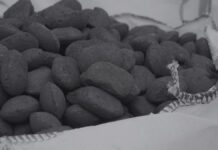As a powerful approach for the measurement of complex gas mixtures, Fourier-Transform Infrared Spectroscopy has come a long way since the first commercial instruments appeared in the late 1950s. Since then, the technique has expanded its domain of usefulness considerably, as Envirotec finds out

Instrumentation firm Protea describes itself as “a world leader in getting the most from this powerful technology,” and has a reasonable claim to be a pioneer in the application of FTIR to the field of emissions testing. The firm introduced its MCERTS-approved Protea 204M in 2008. More recent announcements include a highly mobile, feature-rich and customisable instrument – the atmosFIR range, which seemingly ushers in unprecedented levels of portability, low ownership costs and measurement performance.
As Protea says, atmosFIR can be considered a simple multi-gas analyser for combustion gas measurements. For many, this is all it will be and as such it provides a cost effective and complete system. However, for the expert user, it opens up avenues to more fully experience the power of FTIR, with the possibility of hundreds of gas measurements, multiple analytical ranges, in-depth chemometric result diagnoses and the support of a dedicated on-board sampling system.
Modern digital electronics has extended the analytical power of FTIR, and a great deal of information can be obtained by interrogating the spectra captured by the instrument. And so, as the firm’s Andrew Toy points out, Protea’s FTIR devices can measure not just combinations of gases but highly complex gas mixtures.
The firm has developed its own algorithms and software, which allow users to take this spectra and more fully understand it. And so with an application like stack emissions testing, atmosFIR can be programmed to measure different gases from day to day, but users can also reanalyse the data afterwards to look for other gases.
Protea announced in May that the atmosFIR has received MCERTS approval (to EN 15267 – Type Approval & Certification of AMS (QAL1)), and so it is equipped to perform monitoring in accordance with a number of EU Directives.
MCERTS approval of this kind opens up opportunities in a great many markets, says Toy, including areas like emissions research, stack emissions, and continuous emissions monitoring.
Seemingly uniquely, Protea is the only FTIR supplier on the market to offer an embedded certified O2 sensor, and the firm says it also has the lowest certified range of NO.
The instrument can be used in a cabinet-mounted configuration, but can also be taken out and put in a portable, rugged case.
The firm manufactures fully integrated systems, equipped to meet the monitoring needs of specific applications such as waste-to-energy plants. And it can also supply instruments to meet different customer specifications. For example, not only monitoring gas emission concentrations, but also monitoring things like particulates, stack pressure, stack temperature. and flow reporting in accordance with the emissions permit on a certified CEMS DAS.
Historically, says Toy, FTIR has a reputation as a complex tool requiring a very proficient user. Toy cites one complex measurement application, in a pharmaceutical plant, with six solvent vents carrying a mixture of different types of vapour, and where there is a need to be able to separate these out. “What’s key,” he says, “is the training we give, so it can be used by an inexperienced user.”






